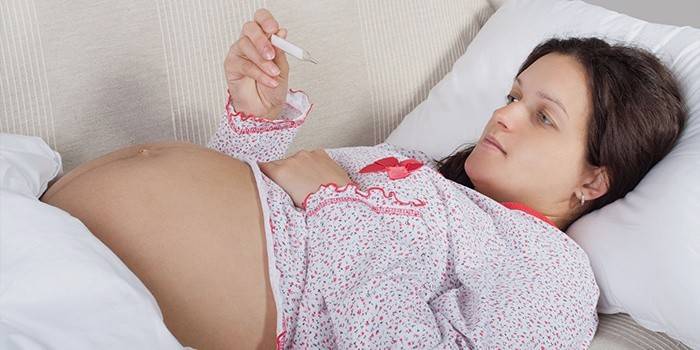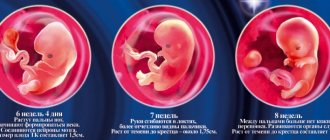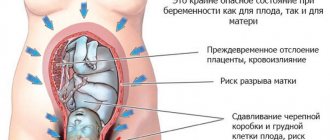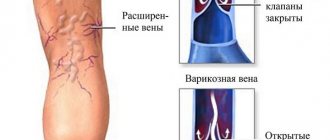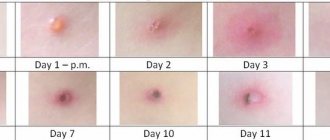What happens to the body in the 9th month of pregnancy
The last month of pregnancy has arrived, it lasts from the 37th to the 42nd week of pregnancy, on average children are born at 38-40 weeks, and only some a little earlier or later. After 38 weeks of pregnancy, the fetus is considered full term, and delivery can begin on any day, only about 5% of children are born exactly on the expected date.
At this stage, the woman is already quite tired of her position and her stomach, which has become very heavy; the agonizing wait and frequent training contractions make her tired and irritable. Now you can no longer be afraid of premature birth if you previously had problems with pregnancy or had complications. Often, with a planned caesarean section, delivery is planned for a period of 38-40 weeks, so that the fetus is as mature and full-term as possible. The last weeks are especially difficult for those who will give birth for the first time, since the sensations of real contractions are still unfamiliar and you are often ready to go to the maternity hospital with training ones.
The body is actively preparing for the process and so-called precursors constantly appear. Two to three weeks before delivery, the abdomen lowers due to the insertion of the fetal head into the pelvic cavity and gradual relaxation of the lower segment of the uterus and cervix. With repeated pregnancies, the stomach may drop immediately before childbirth or at its beginning. The abdominal circumference may decrease slightly due to relative oligohydramnios, due to changes in hormonal levels, which helps in delivery and reduces the risk of complications (umbilical cord prolapse, malpresentation, placental abruption). It will become easier for a woman to breathe, heartburn and discomfort when eating will decrease.
Pain in the lower back and pelvis may be bothersome; the joints and ligaments soften, which helps during childbirth, but affects the condition of the back and pelvic area. Particularly unpleasant and severe pain can be when lowering the head into the pelvis, pressure in the pubic area, sacrum at night, pain in the perineum and vaginal area, it is difficult to find a position in bed and sleep peacefully. Training contractions can become more frequent and stronger, they help the uterus to actively contract in the future. Training contractions are irregular and go away if you calm down and rest on your side, they have the appearance of pulling in the lower abdomen and a feeling that the stomach is turning to stone.
Before giving birth, special body changes called labor signs may occur, along with a drooping belly. Such signs include a decrease in body weight within 2 kg due to the convergence of edema and hormonal changes in the body, decreased appetite and physiological cleansing of the body. Shortly before the event, appetite decreases or disappears completely, there may be loose stools and even diarrhea, nausea and vomiting.
Within a few days or even weeks, the mucous plug may begin to come off - it can come off in parts or entirely, in a lump, as the cervix ripens and the cervical canal opens. The mucus may be yellowish in color, colorless, or streaked with blood. You need to completely pack your bags and documents and be ready to go to the maternity hospital at any time from the start or breaking of your waters, or regular contractions at regular intervals. In the ninth month of pregnancy, a woman must always take an exchange card with her when leaving home.
- Implantation bleeding
- How to lose weight with Bonn soup
- Sulfur ointment - instructions for use and reviews
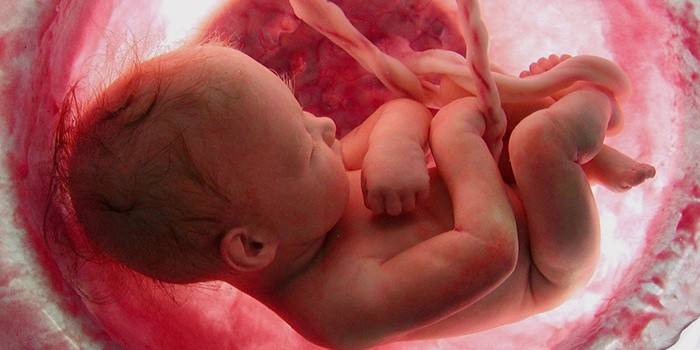
Fetal development: weight, size and gender
At this time, the baby is already fully formed and ready for birth and life outside the mother’s tummy. The child has the entire necessary set of reflexes; the lungs perform breathing movements, although they are still collapsed and will open only with the first breath. They produce enough surfactant to breathe on their own. The digestive system has matured and is ready to accept food and digest it with enzymes; a lot of original feces have accumulated in the intestines, which should be removed only after the birth of the child. It was formed from amniotic fluid, epithelial cells, desquamated cells that enter with swallowed water. Meconium has the appearance of a putty-like olive-green mass, odorless.
By the ninth month, the baby has a proportional body, the skin is smooth and has a pale pink color, the skin vessels are no longer translucent, the fluff (lanugo) has almost disappeared from the body, remaining only a little on the shoulders and back, in the area of natural folds, along with the original lubricant, which protects the baby's delicate skin. Now the baby is actively gaining weight and growing in height, it is becoming more and more crowded in the uterine cavity, he is taking the uterine and most optimal position for childbirth - head down, pressing his arms and legs tightly to the body. He does not have the opportunity for active movements, and now it is mainly pushing, tossing and pulling. They are clearly felt by the mother.
The nervous system matures, it becomes more and more perfect, developed and mature. The nervous system regulates the functioning of all internal organs and glands, which allows the body to function as a single system.
This month, the fetal liver actively accumulates iron for further use for the child’s needs in the first months after birth. Iron is essential for creating new blood cells and preventing anemia. The heart has fully formed chambers and valves, with the exception of those openings that are needed for fetal blood flow, so at birth it will be ready to work in a new way, and the fetal openings will immediately close. Now the oval window and the ductus ductus are open, so that the blood bypasses the lungs, and the baby “breathes” the placenta. At the same time, the lungs themselves, due to the penetration of amniotic fluid into them, perform “breathing” movements and develop.
In boys, the testicles finally descend into the scrotum; in girls, the labia majora cover the labia minora, and the process of genital formation is completed. The immune system is also maturing, although it will still be fully formed after the baby is born. The mother actively transmits antibodies through the placenta to her baby against the main dangerous diseases that she herself suffered from. By the time of birth, the fetus will reach its final height and weight of 48-56 cm and 2800-4000 g. Girls are usually born smaller than boys, although much depends on the characteristics of the parents and the conditions of pregnancy.
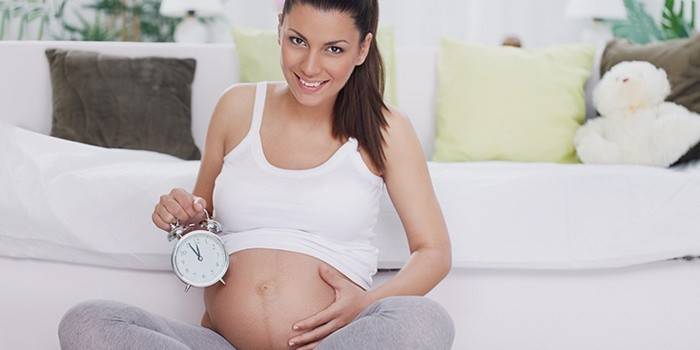
Fetus at 12 weeks of gestation: gender, weight and dimensions
At the twelfth week of life, the fetus develops a fuzz of hairs on the eyebrows, eyelashes, upper lip and chin. An imprint appears on the fingertips in the form of a unique skin pattern. Internal organs continue to develop. The intestines take their proper place and contract regularly. The thyroid gland and pituitary gland begin to produce iodine and hormones, and the liver already produces bile. Leukocytes appear in the blood. The kidneys start working, the nervous system starts up. Muscles are strengthened, bone tissue matures. The baby is growing very quickly. Its length is more important than its weight and is equal to 5.5 cm at 14 g. The amount of amniotic fluid is 50 ml. It is becoming more realistic to determine the sex of the fetus, although these indicators are not always accurate.
Feel
The main sensations of this month are fatigue and harbingers of childbirth, now the woman clearly feels all the movements and movements of the fetus, the stomach has reached its maximum and it is extremely difficult to carry it. But a couple of weeks before giving birth, it becomes easier to breathe and eat due to the lowering of the abdomen and insertion of the head into the small pelvis. At the same time, pressure and discomfort in the pelvic area will increase - constipation may increase and the urge to urge more often due to pressure from the head on the bladder. There may be pain in the sacrum, pubis and thighs due to irritation of nerve endings.
There may be swelling and the risk of varicose veins, the skin on the abdomen becomes very tight and itchy, and stretch marks may occur. Fainting and dizziness are common due to hypoxia and compression of the vessels by the large uterus. Preparations for childbirth are taking place and weight loss of 1-2 kg, diarrhea and vomiting may occur as an option to cleanse the body before childbirth. A woman feels that her lower abdomen is pulling, and abdominal pain may occur, which indicates the onset of regular contractions and labor.
- How to knit a hat for a boy with knitting needles
- Fast-acting antiviral agents
- How to clear memory on iPhone using special utilities - step-by-step instructions
Sign of pregnancy: pulling in the lower abdomen. In accessible words.
There are a wide variety of signs, symptoms, hints and clues that can indicate to a woman that she is likely pregnant. They can appear individually or in several ways at once. And if you suspect or do not rule out that conception may have occurred, then you will certainly recognize some signals given by your body. However, they should not be taken as a “diagnosis” because many early signs of pregnancy are very similar to the symptoms of premenstrual syndrome in women.
Of course, if your next menstruation is delayed and you observe several early signs of pregnancy at once, then the probability of its occurrence is very high. However, we often begin to make assumptions even before our period is missed. And if you have reason to expect pregnancy, then most likely you will feel the earliest sign of pregnancy: a pulling in the lower abdomen .
This can indeed be observed from a very early date. Why does the lower abdomen feel tight at the beginning of pregnancy?
Let's imagine that the egg meets the desired sperm and together they form a zygote. The zygote will now move through the fallopian tubes to reach the uterus and attach to its wall for further growth and development. The path to the future home takes on average 6-12 days (this time frame may differ for different women). Most often, fertilization occurs during the period of ovulation, which occurs approximately on days 10-12 of the cycle (options are also possible here). Thus, it turns out that the fertilized egg reaches the uterus at the end of the cycle, when there are several days left before the next expected period. And in most cases, a woman feels a nagging pain in the lower abdomen - either due to impending menstruation, or due to the “housewarming” of the egg. This is an abbreviated approximate ideal scenario of the events taking place.
In order to “take root” in the uterine cavity, the egg prepares a place for itself: it, as it were, scrapes out the epithelial cells, making a nest in it for planting. This process is called implantation and may be accompanied by some signs that already now, even before the onset of menstruation, will tell the woman that conception has taken place. We are talking mainly about nagging pain in the lower abdomen: your uterus is experiencing an invasion of a “foreign body” and a violation of the integrity of the epithelium. It is likely that during the process of attachment of the egg to the wall of the uterus, small spotting may occur, which a woman often mistakenly perceives as a premature onset of menstruation.
So, a few days before the start of the next cycle, when conception has already taken place, a woman may feel a nagging pain in the lower abdomen, which is often accompanied by slight bleeding (cream, pink, reddish or brown). If she does not suspect that she is pregnant, she will most likely perceive this phenomenon as premenstrual syndrome. Moreover, many other signs of pregnancy in the very early stages are also similar to the sensations before menstruation: soreness and increased sensitivity of the nipples, irritability, nausea, aversion to certain odors, changes in appetite and mood swings.
This is why it is very difficult to recognize pregnancy before a delay. Moreover, a woman’s nagging abdominal pain can have many other causes: stress, taking hormonal drugs, infection, inflammation, injury, a consequence of sexual intercourse or a gynecological examination, and others.
However, nagging pain in the lower abdomen can be a sign not only of pregnancy, but also of the threat of its termination. A fertilized egg is a foreign body in the female body, which the uterus tries to get rid of by starting to contract. Nature has created a natural mechanism for preserving pregnancy in the early stages - the immune functions of the female body are somewhat reduced, giving the future fetus a chance to gain a foothold and survive. But victory does not always remain with the egg, which can be hampered by a number of unfavorable factors. If she is expelled at a very early stage, then the woman may not even know that a miscarriage has occurred - she simply begins her next menstruation.
If the pregnancy is already several weeks old, and you know about its existence or the probability of this is very high, and the nagging pain in the lower abdomen is of a pronounced cramping nature, extends to the lumbar region or is accompanied by bleeding, then it is necessary to urgently go to the hospital to maintain the pregnancy.
Especially for pregnancy. net — Elena Kichak
Discharge
Towards the end of pregnancy, the discharge intensifies, protecting the baby from infections that can enter through the vagina. Now it is important that infection does not develop, as this will be dangerous during childbirth. You should immediately consult a doctor if you have curdled, crumbly or copious milky discharge, and especially yellowish, green, gray, foamy and with an unpleasant odor. They need to be treated immediately. Such discharge reduces the elasticity of vaginal tissue and leads to complications during childbirth and an increased likelihood of postpartum inflammatory processes.
There is also a gradual removal of the mucus plug - these are transparent or slightly pink lumps of mucus; the plug can come away either gradually or simultaneously, as a lump of mucus. Childbirth will begin soon.
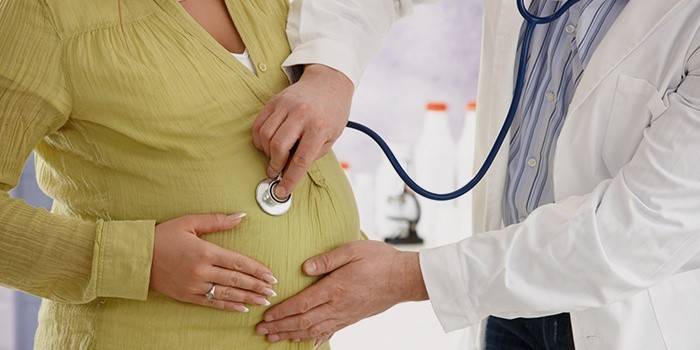
Forum Wisdom: Am I Pregnant?
When to take a pregnancy test?
Delay, negative test...
Will the test show before the delay?
Stomach hurts like menstruation
Is it possible to feel the implantation of an embryo?
Coitus interruptus
Can the lower abdomen hurt in early pregnancy?
Signs of pregnancy before delay
How does a miscarriage occur?
Intrauterine device
I was pulling. And he stabbed and shot. Looks like it's intestines. Or maybe ligaments. When something bad happens, it usually pulls the lower abdomen, lower back, or sides symmetrically.
Congratulations on your first pregnancy experiences. )) Now there will be a lot of them, so it’s better to tune in to the “everything will be fine” wave. .
I was pulling. And he stabbed and shot. Looks like it's intestines. Or maybe ligaments. When something bad happens, it usually pulls the lower abdomen, lower back, or sides symmetrically.
Analyzes and examinations
This month, visits to the doctor will become weekly; it is important to assess the woman’s general condition, her weight and the presence of edema, blood pressure and determine the level of leukocytes, protein and glucose in the urine before each visit. The doctor will assess the woman's readiness for childbirth and may schedule hospitalization in the maternity hospital in advance or at the onset of labor.
At the beginning of the month, an examination will be carried out on the chair and a smear will be taken for flora; additional blood tests may be prescribed. All planned ultrasounds have already been completed, but in case of doubts or concerns, the doctor may prescribe additional ultrasounds or Dopplerography, fetal CTG. This will help in choosing tactics during childbirth and deciding whether it will be natural or whether a cesarean section is indicated.
Mom's diet and weight
During this period, the uterus puts maximum pressure on the internal organs and you need to eat right to avoid nausea and vomiting, constipation and other digestive problems. The birth process and the condition of the baby largely depend on the mother’s nutrition. In the last months of pregnancy, it is worth switching to hypoallergenic food with the exception of potentially dangerous allergens, giving up foods that can become a potential source of intestinal infections or poisoning - canned food, raw foods, unboiled milk, poorly fried meat and fish. It is important to pay special attention to products with calcium - dairy products and cottage cheese, yoghurts. Equally important is consuming enough protein in the form of red meat and iron-containing foods. The amount of meat and fish in the diet should be slightly reduced in favor of vegetables and fruits, vegetable oils, grains and light foods. It is worth giving up fatty, fried and spicy foods, excess sauces and spices, steaming, baking, stewing or boiling food. It is worth eating often, but in small portions, avoiding carbonated drinks, fermented foods, excess sweets and carbohydrates. You can do fasting days once a week in consultation with your doctor. Before giving birth, your appetite may disappear altogether - and this is normal, the body is preparing for difficult work and cleanses the intestines.
